Board Game Gift Guide 2016!

And what better thing to give them than something you can enjoy together – board games!
Like in years past, we’ve got some great game ideas for you to check out. Many we’ve done full reviews for so you can find out even more about them by clicking on the links after each snippet.
This year’s Board Game Gift Guide includes 42 great game ideas!
You can scroll through the whole list or jump to the categories you’re interested in by clicking on category title:
- Children’s Games
- Family Games
- Cooperative Games
- 2-Player Games
- Party Games
- Dice Games
- Deduction Games
- Abstract Strategy Games
- Gamer Games
- Star Trek Games
- Bonus Game
Children’s Games
It’s very common for people to think of games when buying gifts for children. Everyone knows how much children love to play games. Here are 5 games that children will both enjoy and learn from.
Brain Freeze
 Ages: 5+, Players: 2, Time: 10-20 min
Ages: 5+, Players: 2, Time: 10-20 min
Brain Freeze is 2-player game that’s all about guessing their opponent’s secret square. It’s a game that’s easy for kids to dive right into and understand. Yet it also gives them a great mental challenge. Each player has a grid with various treats in different flavors and secretly selects one at the beginning of the game. Then players take turns guessing their opponent’s secret treat/space.
If any one of the 4 characteristics (treat, flavor, row, column) matches the guess, the opponent says “yes”. If not, they say “no”. From the answers, players slowly narrow down the options until they’re ready to make their final guess. The player who guesses their opponent’s secret square first is the winner. Skill development: Deduction & Reasoning
See our video review of Brain Freeze.
Ice Cool
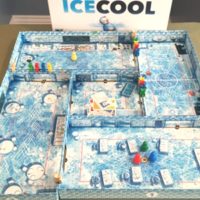 Ages: 6+, Players: 2-4, Time: 20 min
Ages: 6+, Players: 2-4, Time: 20 min
Even though we’re listing Ice Cool in the children’s games section, it’s a hot game for everyone (we even pulled it out during our most recent Guys Game Night because the adults wanted to play it). In Ice Cool players flick penguins around rooms in an icy school to collect fish for points.
It’s played over a number of rounds with one person playing the penguin “catcher” while the others are “runners”. The catcher is trying to flick his penguin into the others and they’re trying to flick their penguins through various doorways. It’s a game you can’t sit down to play. So if you’re looking for a fun game that keeps players on their feet, Ice Cool is a sure hit. Skill development: Dexterity
See our video review of Ice Cool.
Dino Race
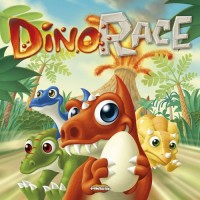 Ages: 8+, Players: 2-4, Time: 30 min
Ages: 8+, Players: 2-4, Time: 30 min
Kids love to race each other. They also tend to love dinosaurs. So why not combine the two and have a dinosaur race? In Dino Race, each player has two cute dinosaurs they’re trying to help reach the end of the randomized hex tile path. To move to the next tile, players must play a card from their hand that matches that tile’s terrain.
Not only is it a race against other players, but also against the lava! Each turn players also roll a die. And sometimes the result causes a tile to flip over to their lava side. So players have to keep both of their dinosaurs moving. Dino Race is a fantastic children’s game. Skill development: Matching and Decisions.
See our review of Dino Race.
Loony Quest
 Ages: 8+, Players: 2-5, Time: 20-30 min
Ages: 8+, Players: 2-5, Time: 20-30 min
Last year we reviewed a fun game called Doodle Quest where players draw various things on transparencies and then overlay them on a central board to see how well they did. Well, Loony Quest is the same type of game, but it steps things up a notch and is a lot of fun. Loony Quest has more of a video game type feel to it as players have more challenging objectives to accomplish with their drawings.
Players look at the central board for reference while drawing on the transparency in front of them. Only when the round ends will they get to overlay their transparency on the central board to see how many points they get. Skill development: Spatial Recognition
Read our full review of Loony Quest.
Garbage Day
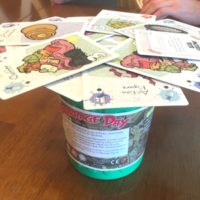 Ages: 10+, Players: 2-5, Time: 20-30 min
Ages: 10+, Players: 2-5, Time: 20-30 min
Garbage Day is a very creative dexterity game. It’s a card-stacking game where the cards are placed flat. You’d think it would be easy to keep a stack of flat cards from falling. But once you throw in a garbage can to place them on and requirements on how they’re placed, you’ve got a fun game kids will love.
Each card in Garbage Day has two holes punched in it. When placing a card on the garbage can, players must be able to see the table clearly through both holes. So the pile of garbage continues to expand (spew) from the top of the garbage pile during the game. And of course, you don’t want to be the one to make the pile of garbage fall!
Skill development: Dexterity. (Also parents can hope their kids learn to keep their rooms clean. Good luck!)
See our full review of Garbage Day.
Family Games
Even though we have a “Family Games” category, most of the games on our whole list are great games for families. That being said, here are 5 games that absolutely fit the bill as fantastic games for the whole family.
Karuba
 Ages: 8+, Players: 2-4, Time: 30-40 min
Ages: 8+, Players: 2-4, Time: 30-40 min
We love tile-laying games where the board grows as you play. And Karuba is a great tile-laying game for the whole family. In Karuba, each player has their own board in which they’re laying tiles to create paths through the jungle for their adventurers.
Since all players are exploring their own jungle there isn’t direct conflict. Instead it’s a more of a race to create the most efficient path to the treasures and temples. It also feels a bit like putting a puzzle together – a puzzle that leads to treasure.
See our video review of Karuba.
Lanterns
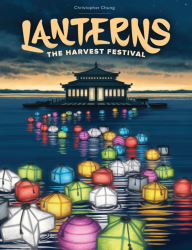 Ages: 8+, Players: 2-4, Time: 30 min
Ages: 8+, Players: 2-4, Time: 30 min
Another fun tile-laying game the whole family can enjoy playing together is Lanterns. Unlike Karuba however, everyone adds tiles to the central board. And in this case the central board is an expanding lake of colorful lanterns. Yet Lanterns is more than just a tile-laying game. It’s also a set-collection game.
When players play tiles, they collect colored cards. Then they turn in sets of colored cards for points. One thing we love about Lanterns is that players also collect cards on other players’ turns. Getting cards on every players’ turn keeps all players engaged the whole time.
See our review of Lanterns.
Between Two Cities
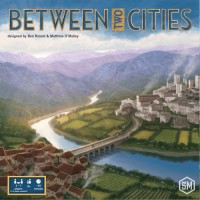 Ages: 8+, Players: 1-7, Time: 20 min
Ages: 8+, Players: 1-7, Time: 20 min
How about a third tile-laying game for our Family Games category this year? Well, it’s because Between Two Cities is yet another unique game that offers a whole different player experience. In Between Two Cities players work together with the players on both their left and right to construct joint cities.
There are 5 different types of tiles players can put in their cities and each scores in a different way. So players must work together to build up a valuable city. However, the most valuable city isn’t the winner! Instead, a player’s score is the lower of their two cities. Then those scores are compared to see who has the highest score to win! Plus up to 7 people can play and the game time is the same regardless of the number of players. Love it!
See our review of Between Two Cities.
Crossing
 Ages: 6+, Players: 3-6, Time: 15 min
Ages: 6+, Players: 3-6, Time: 15 min
Crossing is a light family game where players compete to gain the most sets of colored gems. And the way players gain gems in Crossing is rather simple – they just point at them! Of course, there is a catch. Because if more than one player points at the same pile of gems, no on gets them.
Since players all point simultaneously each round, they have to be judicious in which gems they choose to point at. Players can either point at the different central piles of gems or point at another player’s pile of gems. Or players can cover up their own pile of gems so they can permanently store them so other players can’t steal them. Games go by quickly and before you know it, you’re playing again.
See our review of Crossing.
Bring Your Own Book
 Ages: 12+, Players: 3-8, Time: 20-60 min
Ages: 12+, Players: 3-8, Time: 20-60 min
It’s time to get away from the table altogether and kick back on the couch with a good book for this game – Bring Your Own Book. Just as the name implies, the crux of the game centers on players using their own books to play. Thus, one of the main components of the game is what you contribute yourself.
In Apples to Apples style, the objective is to get the most cards awarded. But instead of chipping in cards to the central judge, players search for passages in their books that best fit the prompt. It’s such a creative twist on this game play and we love grabbing many different types of books to play with (novels, biographies, self-help, manuals, cookbooks, comic books, etc.). We’re pretty sure your family will love playing too.
See our full review of Bring Your Own Book.
Cooperative Games
Cooperative board games have continued to expand into new territory every year and we love it. It’s a lot of fun playing a game where everyone works together rather than competes against each other. If you haven’t played a cooperative board game before, this is the year to give it a shot!
Harry Potter: Hogwarts Battle
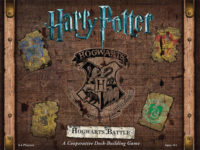 Ages: 11+, Players: 2-4, Time: 30-60 min
Ages: 11+, Players: 2-4, Time: 30-60 min
The latest cooperative game to hit the market is actually a deck-building game as well – Harry Potter: Hogwarts Battle. A deck-building game is where players start with a basic deck of cards and acquire more cards throughout the game to add to their deck and make it more powerful in future turns. In HP: Hogwarts Battle players are also working together to defeat villains from the Harry Potter books.
The game is also set up to correspond to the 7 books in the series. As players progress they open new boxes of cards that add more elements to the game play. Players can keep the cards separated as books or combine them all for future games. We haven’t played all the way through the 7 books yet, but the game has been a hit so far. (And we don’t imagine that dropping.)
See our full review of Harry Potter: Hogwarts Battle.
Burgle Bros.
 Ages: 12+, Players: 1-4, Time: 90 min
Ages: 12+, Players: 1-4, Time: 90 min
One of the cooperative board games we’ve enjoyed playing the most this year has been Burgle Bros. Just like we’d imagine a real heist to be, Burgle Bros. is a challenging cooperative experience. Players work together to crack 3 safes and escape to the roof to win.
The tension builds nicely as players explore the 3 floors of the bank – setting off alarms, cracking safes to grab the loot, and trying to stay a step ahead of the guards. The game has old-style artwork we really enjoy as well.
See our full review of Burgle Bros.
Legends of Andor
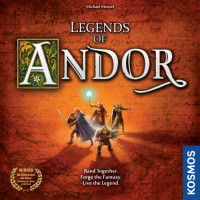 Ages: 14+, Players: 2-4, Time: 60-90 min
Ages: 14+, Players: 2-4, Time: 60-90 min
If you’re looking for some adventure in your cooperative board games, you’ll want to check out Legends of Andor. In Legends of Andor players are heroes working together to rid the land of menacing monsters. But rather than the same set up every time, the game is played as different “legends” with different objectives to complete.
The basic mechanics are the same each game but the scenarios and goals change – requiring players to use their special abilities differently to face each the challenge of each legend differently.
See our review of Legends of Andor.
Dead of Winter
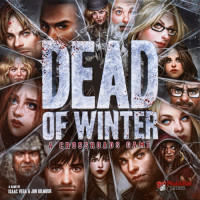 Ages: 14+, Players: 2-5, Time: 45-210 min
Ages: 14+, Players: 2-5, Time: 45-210 min
If you’re looking for even more variety in a cooperative board game, then dive into Dead of Winter! In Dead of Winter players are a group of survivors trying to last through the winter after a zombie apocalypse. Like most cooperative board games, players are trying to complete a common objective. However, even though everyone is working together to complete a main objective, players also have their own secret objectives to complete.
Only players who complete their secret objectives will win. Players also have to be careful because within the group may be a Betrayer working against the colony! There is so much to this game that a short snippet just can’t do it justice. We have a blast every time we play (and we don’t even like zombie stuff)!
See our full review of Dead of Winter.
2-Player Games
Sometimes it’s great to just kick back and relax with a friend, sibling, or spouse for a nice 2-player game. Here are a few 2-player games to consider for those times.
7 Wonders Duel
 Ages: 10+, Players: 2, Time: 30 min
Ages: 10+, Players: 2, Time: 30 min
As big 7 Wonders fans, it was inevitable that we’d buy 7 Wonders: Duel. Because when mom likes a game, you can bet we’ll get more of it. And that’s the case with 7 Wonders. However, 7 Wonders: Duel isn’t more of 7 Wonders – it’s a whole new game.
As the name suggests 7 Wonders: Duel is a 2-player head-to-head match up. The familiar symbols and artwork of 7 Wonders are still there but the game play is different. And we really like it! I feel like I finally found a 2-player game that I can enjoy with my wife for years to come!
Klask
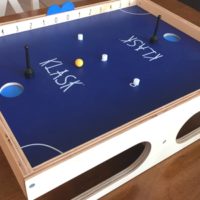 Ages: 6+, Players: 2, Time: 5 min
Ages: 6+, Players: 2, Time: 5 min
If you’re looking for a more active 2-player game experience, check out Klask. There’s no playing playing of cards or rolling dice in Klask. Instead, Klask is like a mini air hockey game. But instead of air, magnets take center stage.
Players compete to get the ball in the other player’s goal by using a magnetic paddle – which they control by a magnet under the table. And getting the ball in the goal isn’t the only way players can score points. It’s can be a frantic head-to-head battle, but enjoyable.
See our video review of Klask.
Khet: The Laser Game
 Ages: 9+, Players: 2, Time: 20 min
Ages: 9+, Players: 2, Time: 20 min
How about giving a gift of a board game with lasers? That’s right; Khet is a board game that uses laser beams and mirrors. It’s a chess-like game with Egyption-themed pieces where players are trying to get their opponent’s main piece – in this case a pharaoh. But instead of capturing the opposing pharaoh, players are trying to zap it with lasers!
Players move and twist their mirror pieces on the board to create laser paths. After a player either moves or twists one of their pieces on the board, they press a button to fire their laser. If the laser shines on a playing piece on a side without a mirror showing, the piece is removed from the game. It’s hard to beat playing a good board game with lasers!
Watch for our video review of Khet.
Mr. Jack
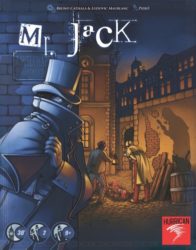 Ages: 9+, Players: 2, Time: 30 min
Ages: 9+, Players: 2, Time: 30 min
Mr. Jack could also fit well in the Deduction Games category of our gift guide. It’s a great 2-player game with one player trying to escape and the other player trying to catch him/her. You might be able to guess from the name that “Jack” refers to Jack the Ripper. And while that’s not a pleasant thought at all, the game itself doesn’t have any overt inclinations to the subject matter.
Rather players will simply focus on either catching or not being caught. Players do so by using character abilities to move around the hex map and perform special actions. The detective player tries to whittle down the suspects while Mr. Jack tries to stop that from happening.
Party Games
Perhaps the most popular type of game people enjoy playing is a party game. Whether with family or friends, people simply love to play party games. Here are a handful of party game suggestions to give as gifts.
Speechless
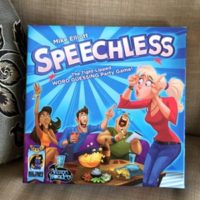 Ages: 14+, Players: 3-8, Time: 45 min
Ages: 14+, Players: 3-8, Time: 45 min
Speechless is another game I first encountered at Gen Con this year that has become a hit in our family. While another charades game by itself may not be a new idea, Speechless adds a fun twist on the game. Like many charades games, one player acts something out and others try to guess it.
However, unlike other charades games, there aren’t any teams and players don’t shout anything out. Instead all players write down only one guess on their dry erase board for each word acted out. If they guess the word correctly, they score 2 points. If they don’t get it correct, but they write down the same word another player does, both players score 1 point.
See our full review of Speechless.
Stipulations
 Ages: 13+, Players: 4+, Time: 30 min
Ages: 13+, Players: 4+, Time: 30 min
If you’re looking for a game to let your creatively cynical side shine, look no further than Stipulations. In Stipulations players are once again competing to be awarded cards for submitting the best answer to a situation. However, the answers in this game are all restrictive in nature.
That’s because the player whose turn it is had either a Superpower, a Career, a Dream, or a Lifetime Supply of Something, and the other players write down a stipulation to go with it. The active player then chooses the stipulation they would like the least and awards the card to the player who submitted it. So if you’d like to dash your friend’s dreams, then grab a copy of Stipulations to play.
See our review of Stipulations.
Spyfall
 Ages: 12+, Players: 3-8, Time: 15 min
Ages: 12+, Players: 3-8, Time: 15 min
Spyfall is both a party game and a deduction game. At the start of each round all players receive cards showing the same location except for one player who receives a card that says “Spy” instead of the location. Players take turns asking and answering questions that will help them reach their goal.
Most of the players are trying to figure out who the spy is while the spy is trying to figure out the location. If the spy is uncovered, all other players score points. But if the spy correctly guesses where they are, only the spy scores points.
See our review of Spyfall.
America
 Ages: 10+, Players: 2-6, Time: 30-45 min
Ages: 10+, Players: 2-6, Time: 30-45 min
Even though it’s decades old, Trivial Pursuit continues to be a very popular party game. Yet, many people don’t like the game because it’s all about obscure bits of trivia. Well, in the new game, America, players don’t have to know the exact answer to obscure questions. Instead, the topics in America have a broader appeal since they’re areas in which players will have some type of educated guess.
But the best part about America is the game play. Each topic has answers related to a year, a state, or an amount and players can place guesses in any or all of those areas. Players also get points for being close! While the game box says the maximum number of players is 4, it’s a great game to play in teams.
Dice Games
There’s something wonderful about rolling dice. While it may be randomness in flipping cards, anticipating the result of a die roll feels more exciting. Here are a few games where dice take center stage.
Luchador
Take to the Mexican Lucha Libre wrestling mats either as a 2-player head-to-head match or as multi-player tag teams in Luchador: Mexican Wrestling Dice. It’s a dice-rolling fest with head locks, chair smashes, and table slams and it can be a hoot.
As if the character standees and reference cards aren’t enough, Luchador even comes with it’s own ring! The custom dice in Luchador are a lot of fun to play with as players strive to either knock out or pin their opponent before their opponent does the same to them.
See our video review of Luchador.
Steampunk Rally
 Ages: 14+, Players: 2-8, Time: 45-60 min
Ages: 14+, Players: 2-8, Time: 45-60 min
Steampunk Rally is both a dice-placement and a card-drafting game. Players compete to build the best invention and get it through the race in first place. Of course, building the best invention won’t come easy. Nor will it be a “one-and-done” sort of operation.
During the race, players build up their machine with parts cards that help it move along the racetrack. But they’ll also lose parts and need to reconfigure their invention along the way to keep steaming ahead. Since players do their actions simultaneously, there’s limited down time as well as a bit of chaos.
See our review of Steampunk Rally.
Machi Koro
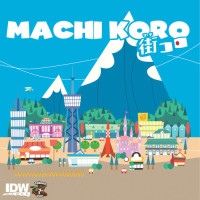 Ages: 7+, Players: 2-4, Time: 30 min
Ages: 7+, Players: 2-4, Time: 30 min
Machi Koro is a quick game where players compete to build their cities to become the largest in the region. Players do this by rolling dice, collecting money, buying establishments, and ultimately building 4 landmarks. While cards represent players’ cities, it’s the dice rolling that drives the action.
This makes Machi Koro luck-dependent, but strategy is still needed along the way – by choosing which cards to buy to add to their city as well as when to invest in buying landmarks. And if you enjoy playing Machi Koro, there are also a couple expansions you can add to the mix.
See our review of Machi Koro.
Fluxx Dice
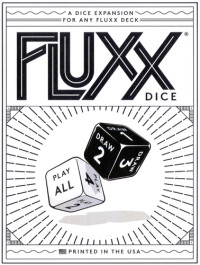 Ages: 8+, Players: 2-6, Time: 10-30 min
Ages: 8+, Players: 2-6, Time: 10-30 min
If someone you know really enjoys randomness in their games, then check out Fluxx Dice. Having “Fluxx” in the name itself tells you a lot about the randomness in this game. Fluxx card games are known for being completely random. Everything changes in a game of Fluxx – including the rules and win conditions! So why not throw in some dice?
Fluxx Dice is actually a game expansion that includes 2 dice and 5 cards that can be added on to any of the many games of Fluxx. With Fluxx Dice, players roll the dice at the start of every turn to determine how many cards to draw and how many to play.
See our review of Fluxx Dice.
Deduction Games
If you’re looking for a game gift for a friend or family member who loves solving mysteries, check out these great games to exercise their deductive powers.
Deception: Murder in Hong Kong
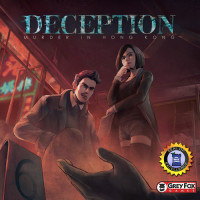 Ages: 14+, Players: 4-12, Time: 20 min
Ages: 14+, Players: 4-12, Time: 20 min
Deception: Murder in Hong Kong not only quickly became our 2nd most-played game this year after just one month of opening it. It’s also become our most requested game to borrow by friends and neighbors!
One of the players in a game of Deception is secretly the murderer and players have to correctly identify the method and means by evaluating the 8 images in front of all the players. Another player, who remains silent the whole game, gives clues to help the investigators solve the case. Trying to deduce the murderer from the vague clues given is a lot of fun. We highly recommend Deception.
See our review of Deception: Murder in Hong Kong.
Fugitive
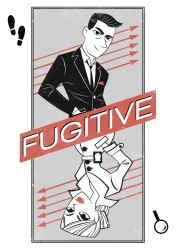 Ages: 10+, Players: 2, Time: 5-20 min
Ages: 10+, Players: 2, Time: 5-20 min
Even though Fugitive is a 2-player card game, we think it fits well in the Deduction Games category. The deduction lies on the side of the Marshal who has to capture the Fugitive before he escapes.
The deck is composed of 43 cards, numbered 0 – 42, which represent places the Fugitive can hide. If the Fugitive is able to play the #42 card, he has managed to get out of town and wins the game. If the Marshal uncovers all the Fugitive’s hideouts before he can escape, the Marshal wins.
See our video review of Fugitive.
Clue: Harry Potter Edition
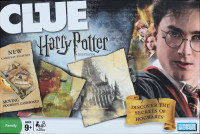 Ages: 9+, Players: 3-5, Time: 30 min
Ages: 9+, Players: 3-5, Time: 30 min
Since Clue is such a popular board game, we don’t think we need to explain what it’s about or how to play. Because of its popularity, there have been a number of themed Clue games published over the years.
If your family enjoys the Harry Potter books and movies like our family does, then we’d highly recommend getting a copy of Clue: Harry Potter edition. It pulls in the Harry Potter theme fabulously. The secret passageways between corner rooms even shift like the staircases in the castle. Just be careful not to lose all your house points or you’ll be eliminated from the game.
See our video review of Clue: Harry Potter Edition.
Telepathy: Magic Minds
 Ages: 10+, Players: 2, Time: 10-20 min
Ages: 10+, Players: 2, Time: 10-20 min
Magic Minds is 2-player game similar to Brain Freeze (listed in the Children’s Games section) but more challenging. Each player has an 18×18 grid with different 9 different items and 9 colors. Each player secretly selects one of their squares at the start of the game and players take turns guessing their opponent’s secret space.
If any one of the 4 characteristics (item, color, row, column) matches the guess, the opponent says “yes”. If not, they say “no”. From the answers, players slowly narrow down the options until they’re ready to make their final guess. The player who guesses their opponent’s secret square first is the winner.
See our video review of Magic Minds.
Abstract Strategy Games
If you’re looking to buy a game gift for someone who loves thinking, you may want to consider some abstract strategy games. These games dismiss theme completely and focus solely on the mental challenge of working within the constraints of the typically minimal game rules.
Six
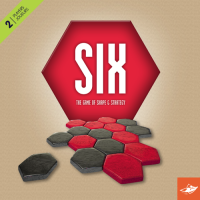 Ages: 7+, Players: 2-4, Time: 20 min
Ages: 7+, Players: 2-4, Time: 20 min
As the name suggests, in a game of Six, the objective is to get 6 hexes in a certain pattern to win. While we think it’s best as a head-to-head 2-player game, the rules allow for 4 people to play in teams.
Players alternate turns placing their colored hexes until a player gets 6 of their hexes to form one of 3 patterns – either a straight line, a circle, or a pyramid. It’s a quick game to play and is a good challenge for equally matched players.
See our video review of Six.
MOD X
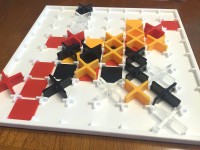 Ages: 10+, Players: 2-4, Time: 25 min
Ages: 10+, Players: 2-4, Time: 25 min
MOD X is another game of players trying to arrange their playing pieces in different patterns. However, in this game the target number of pieces in a pattern is 5. But making a pattern isn’t the end goal. The end goal is scoring points.
Once players create a successful pattern, they remove their playing pieces and place score markers on the board marking these spaces. Yet other players can play pieces on top of scoring markers – making it possible to place their own scoring markers over them later. So players’ scores will fluctuate throughout the game until one player reaches the designated amount of points to win.
See our video review of MOD X.
GIPF
 Ages: 9+, Players: 2, Time: 30-60 min
Ages: 9+, Players: 2, Time: 30-60 min
This list seems to be going down in order – first 6, then, 5 and finally 4. That’s because in GIPF players are trying to get 4 in a row. When a player gets 4 in a row, they get their own pieces back and capture any of their opponent’s pieces that extend that row.
The goal in GIPF is to capture enough of your opponent’s pieces that they don’t have enough left to bring into play. Once a player runs out of pieces to play to the board, they lose. The simple but unique game play in GIPF creates a wonderful 2-player challenge. The only catch is that games in the GPF series are hard to get.
Rubik’s Race
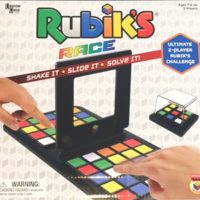 Ages: 7+, Players: 2, Time: 5 min
Ages: 7+, Players: 2, Time: 5 min
Rubik’s Race is a 2-player game where players race to match a certain color pattern on their board before their opponent can do the same on their board.
Players move the interconnected tiles on their board by sliding them around. While the player boards are a 5 x 5 grid, only the central 3 x 3 area is the part that counts. If you know someone who’s good at solving sliding puzzles, they’ll do well with Rubik’s Race.
See our full review of Rubik’s Race.
Gamer Games
If you know someone that really, really loves board games, then consider giving them games that require a bit more strategy or are dripping with a lot of theme.
Scythe
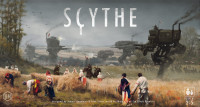 Ages: 14+, Players: 1-5, Time: 90-115 min
Ages: 14+, Players: 1-5, Time: 90-115 min
With a playtime around 2 hours, Scythe isn’t going to appeal to everyone. But if you’re looking for a gift for someone who loves strategy board games, Scythe should be at the top of your list. In Scythe players expand their faction through strategic choices, territory control, resource management, construction, upgrades, and combat.
There’s not enough space in this short blurb to adequately describe Scythe so we’ll recommend you check out our full review of “17 Thing I Love About Scythe”.
See our video review of Scythe.
Mechs vs Minions
 Ages: 14+, Players: 2-4, Time: 60-90 min
Ages: 14+, Players: 2-4, Time: 60-90 min
Mechs vs. Minions is a very recently release that’s getting rave reviews from game reviewers around the world. It’s referred to League of Legends the board game. We haven’t had a chance to play it yet, but from what we’ve seen we’d love to give it a go! It’s a cooperative game where players join mech forces to take on an army of marauding minions.
With modular boards, programmatic command lines, and a story-driven campaign, each mission will be unique, putting teamwork, programming, and piloting skills to the test. If you’ve got a “gamer” on your gift list, you probably can’t go wrong with Mech vs. Minions.
Elder Sign
 Ages: 13+, Players: 1-8, Time: 60-120 min
Ages: 13+, Players: 1-8, Time: 60-120 min
Elder Sign is a dice-driven, cooperative game set in the H.P. Lovecraft world of supernatural intrigue. Players take the roles of investigators racing against time to stave off the imminent return of the Ancient One.
Armed with tools, allies, and occult knowledge, investigators must put their sanity and stamina to the test as they adventure to locate Elder Signs, the eldritch symbols used to seal away the Ancient Ones and win the game.
Insert Here
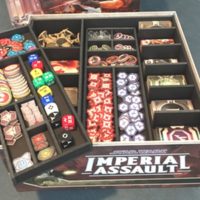 This may seem like an interesting choice because Insert Here isn’t a board game. It’s actually a company that creates custom inserts for board games.
This may seem like an interesting choice because Insert Here isn’t a board game. It’s actually a company that creates custom inserts for board games.
If you’ve got a gamer friend or family member, they’d definitely love to get a custom game insert for one of their favorite board games. Insert Here makes foam-core inserts for over 150 games!
Check out Insert Here to find a great game-related gift for the gamer in your life.
Star Trek Games
Last year we highlighted many great Star Wars themed board games. This year, with the release of Star Trek Beyond we figure it’s only fitting that we highlight popular Star Trek board games. For Star Trek fans, here are some great board games to check out.
Star Trek Panic
 Ages: 13+, Players: 1-6, Time: 90-120 min
Ages: 13+, Players: 1-6, Time: 90-120 min
Based on the same type of game play from one of our favorite cooperative board games, Castle Panic, it’s not surprising that we enjoy Star Trek Panic. In fact, Star Trek Panic is even more challenging than its predecessors.
In Star Trek Panic, players fight to keep the USS Enterprise from falling to the barrage of Klingon and Romulan ships throughout the game. Fighting the enemy off is more dangerous in space because in Star Trek Panic, the enemy doesn’t just damage the Enterprise when they get in close – they also fire from all ranges!
See our review of Star Trek Panic.
Star Trek Ascendancy
 Ages: 14+, Players: 3, Time: 90-180 min
Ages: 14+, Players: 3, Time: 90-180 min
Star Trek Ascendancy was a huge hit at Gen Con 2016. With stacks of the game for sale and lots of table space in the open play area, this game was hard to miss. The game has more than 200 plastic miniatures and 30 star systems representing some of the Star Trek galaxy’s most notable planets and locations.
Players command ships, explore new space systems, encounter new life forms and new civilizations, make wondrous discoveries, and face challenging obstacles, all drawn from the vast fifty-year history of Star Trek. With an infinite combination of planets and interstellar phenomena, no two games of Star Trek: Ascendancy will ever play the same.
Star Trek Attack Wing
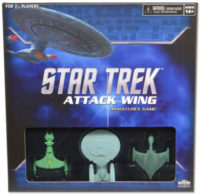 Ages: 14+, Players: 1+, Time: 60 min
Ages: 14+, Players: 1+, Time: 60 min
Star Trek: Attack Wing is a tactical space combat miniatures game, featuring pre-painted ships from the Star Trek Universe. As commander, players have the ability to customize, upgrade, and assign famous crewmembers to their fleets, which feature ships from the series’ prominent empires and forces as well as special stats and abilities.
Players plan their moves using hidden combat dials then take turns resolving those moves and other abilities until one player is victorious.
Star Trek Catan
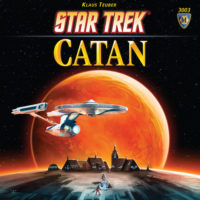 Ages: 10+, Players: 3-4, Time: 75 min
Ages: 10+, Players: 3-4, Time: 75 min
Star Trek: Catan takes two well-known properties and merges them into one. While we haven’t played Star Trek: Catan we’ve heard it does a fantastic job at adding a Star Trek theme to the familiar game play of Settlers of Catan.
Players collect and trade resources (dilithium, tritanium, food, oxygen and water) in order to build Starships that connect regions in the galaxy, establish more Outposts and Starbases in order to gain more resources and development cards for victory points to win the game. To integrate the theme, Star Trek: Catan also includes Support Cards that provide special abilities from Kirk, Spock, McCoy, Sulu, Scott, Uhura, Chekov, Chapel, Rand, or Sarek.
Bonus Game:
Star Wars: Destiny
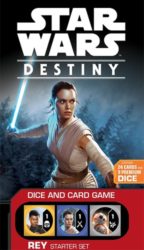 Ages: 10+, Players: 2-4, Time: 10-45 min
Ages: 10+, Players: 2-4, Time: 10-45 min
With the movie release of Rogue One: A Star Wars Story in December, we can’t leave Star Wars games completely off our list this year. And a game we’re excited to play is Star Wars: Destiny. So we can imagine many others on your gift list might be too. Star Wars: Destiny is a collectible dice and card game of battles between iconic heroes and villains that encompasses characters, locations, and themes from the entire Star Wars saga.
The game combines dice-driven combat with faction-driven card management. And players will be able to create decks that include characters from every faction and any era, as long as heroes and villains are on opposite sides of the fight. At launch in November 2016, Star Wars: Destiny consists of two starter sets — Rey and Kylo Ren, each with nine dice and 24 cards — and the Awakenings booster packs, each containing one die and five cards.
If these 42 games aren’t enough, you can always take a look at our Board Game Gift Guides from years past.
- 2015 Board Game Gift Guide
- 2014 Board Game Gift Guide
- 2013 Board Game Gift Guide
- 2012 Board Game Gift Guide
- 2011 Board Game Gift Guide

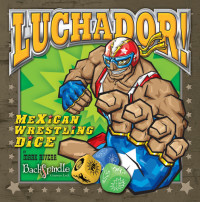

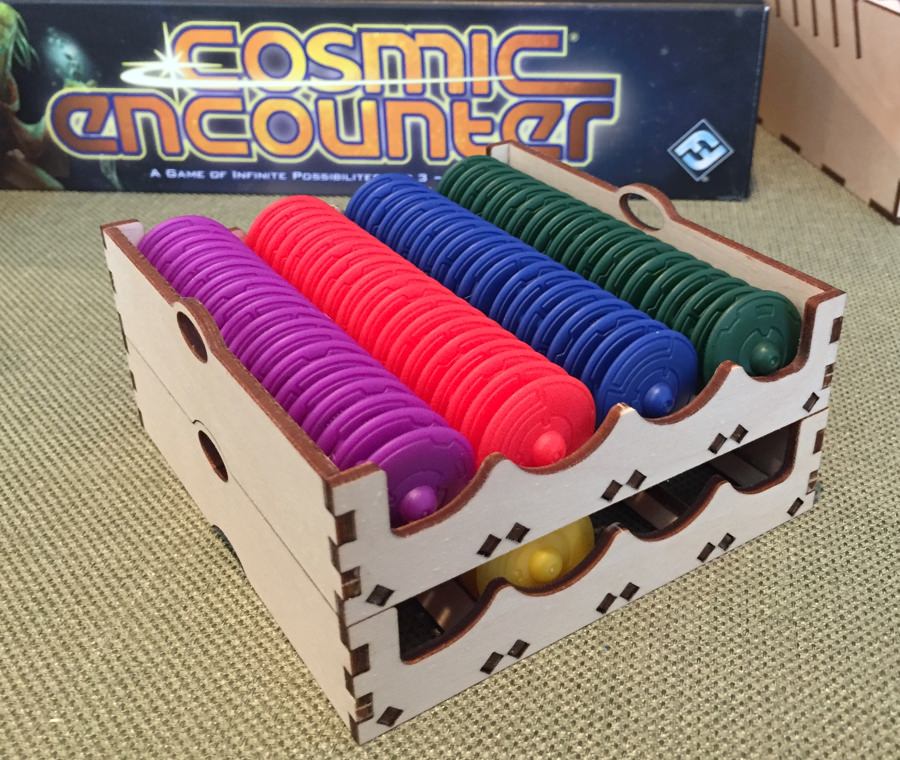


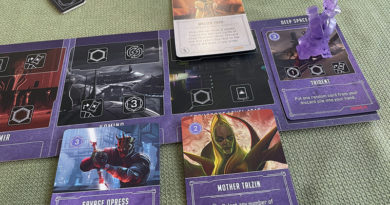
Now that’s what I call a comprehensive gift list… Something there for everyone.
Personally, I think Crossing, Ice Cool and Loony Quest will be the top of my family Christmas wish list…
Great work putting this all together.
Tom – We’re happy to hear you’ve found the list helpful. And those three games will make for some great family fun.
Thanks for these reviews! You have helped our family find some great games over the years. Love reading your recommendations! Thanks again!
We’re so happy to hear you’ve found our reviews helpful for finding great games for your family!
Do you have any more information on the Star Wars Destiny game? The web site says coming out in November, but I haven’t seen it anywhere. Apparently there were launch parties on the 20th, but I couldn’t find one in my area.
Thanks for your blog, it is great to see a family playing games together.
Brandon – We haven’t seen it in stores yet either. Hopefully it will be on the shelves very soon.